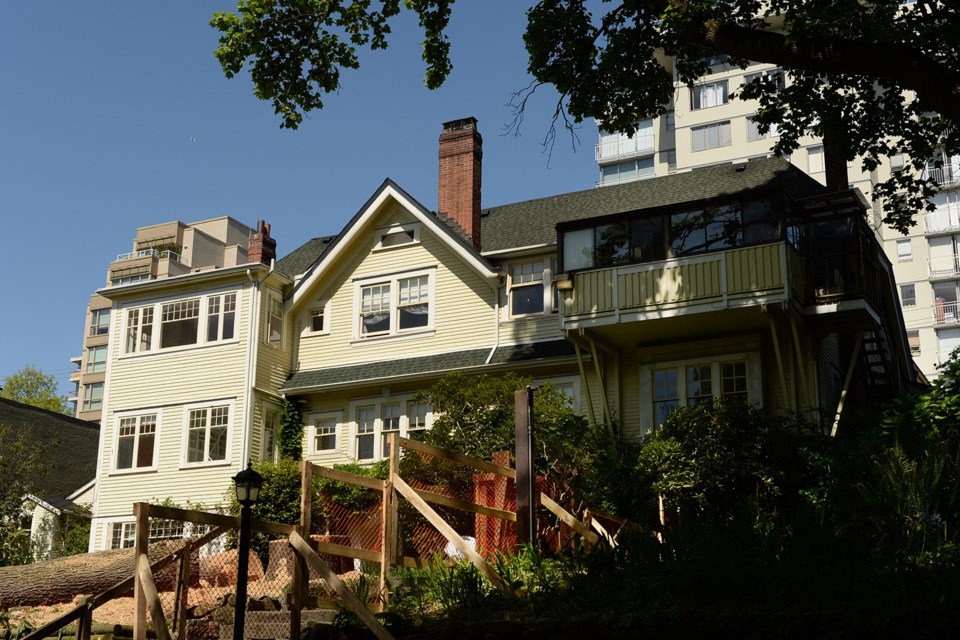The historic Legg Residence in Vancouver’s West End could be saved from demolition if someone wants to pay to move it to another site. But a deal would have to be made quickly.
A 17-storey tower is going to be built on the Harwood Street property. Attempts to come up with a plan to save the heritage home on the site as part of the redevelopment failed.
If no one comes forward, the Legg Residence will be knocked down.
Moving it would be an expensive project. It cost about $350,000 to move the twin 1930s-era Dorothy houses two blocks recently on Vancouver’s West Side.
The Legg Residence is one of the few surviving grand estate homes built in the West End at the end of the 19th century, according to the Heritage Vancouver Society.
“This house was under construction in July 1899, just 12 years after the arrival of the CPR railway. The Klondike Gold Rush had ushered in a brief wave of prosperity, and the city’s wealthier citizens were developing a number of grand residences, such as Gabriola on Davie Street, in the desirable West End,” the organization explains in its 2011 Top Ten Endangered Sites list.
“Gordon T. Legg, who arrived in Vancouver in 1889, was the manager of Union Steamships of BC, and was one of the founders of the Royal Vancouver Yacht Club. Designed in the British Arts and Crafts style, the house — with its broad overhanging jerkin-headed roof — typifies the style and grace of the late Victorian era and the patriotic connections to the Mother Country of many of Vancouver’s elite.”
Brian Jackson said the property owner is required under development permit conditions to offer the house for sale, basically for the cost of moving it.
He said the house would have to be moved in at least two pieces.
Dan Du from Bing Thom Architects, the firm working on the development, said it would be a challenging move and street trees might have to come down.
Jackson said it’s not clear what would happen.
“What happens to the street trees is dependent on the number of pieces that the house is moved in and how the house is divided so we don’t know yet if the street trees are going to be affected,” Jackson said.
He wouldn’t speculate on how much it might cost, but said it may be possible to take it down to the water and barge it to another site.
“A number of houses used to be barged up to waterfront communities up north like Powell River,” he said.
“That happened a lot in the ’60s and ’70s.”
A buyer would have to be found within weeks, according to Du.
“It would have to [happen] pretty soon because we have to meet our own construction schedule as well,” he explained.
“We have not got our building permit but it’s getting close and we’re hoping to start construction next month.”
Du said a buyer would need to come forward with a suitable “receiver site” that can accommodate the Legg Residence, which is about 8,000 square feet over three levels.
Jackson said it’s sad the way the situation has unfolded.
“We would like to see the house saved in another location. We did everything we could to try and save it in its existing location,” he said.
noconnor@vancourier.com
twitter.com/naoibh



